Diameters Offered: 27.5’’ and 29’’
Stated Widths:
- Butcher Grid Trail 27.5’’: 2.2’’
- Butcher Grid Trail 29’’: 2.4’’ and 2.6’’ options
- Butcher Grid Gravity 27.5’’: 2.4’’
- Butcher Grid Gravity 29’’: 2.4’’ and 2.6’’
Stated Weights:
- Butcher Grid Trail T9 27.5 x 2.2’’: 1000 g
- Butcher Grid Trail T9 29 x 2.4’’: 1048 g
- Butcher Grid Trail T9 29 x 2.6’’: 1110 g
- Butcher Grid Gravity T9 27.5 x 2.4’’: 1260 g
- Butcher Grid Gravity T9 29 x 2.4’’: 1307 g
- Butcher Grid Gravity T9 29 x 2.6’’: 1330 g
BLISTER’s Measured Weights:
- Butcher Grid Trail T9 29 x 2.4’’: 1048 g
- Butcher Grid Gravity T9 29 x 2.4’’: 1307 g
Blister’s Measured Width (on 30 mm internal-width rim):
- Butcher Grid Trail T9 29 x 2.4’’: 2.32’’ (casing) / 2.48’’ (tread)
- Butcher Grid Gravity T9 29 x 2.4’’: 2.3’’ (casing) / 2.48’’ (tread)
MSRP:
- Grid Trail casing: $70 USD
- Grid Gravity casing: $75 USD
Diameters Offered: 27.5’’ and 29’’
Stated Widths:
- Eliminator Grid Trail 27.5’’ and 29’’: 2.4’’
- Eliminator Grid Gravity 27.5’’ and 29’’: 2.4’’
Stated Weights:
- Eliminator Grid Trail T9 27.5 x 2.4’’: 975 g
- Eliminator Grid Trail T9 29 x 2.4’’: 1004 g
- Eliminator Grid Gravity T7/T9 27.5 x 2.4’’: 1240 g
- Eliminator Grid Gravity T7/T9 29 x 2.4’’: 1330 g
BLISTER’s Measured Weights:
- Eliminator Grid Gravity T7/T9 27.5 x 2.4’’: 1240 g
Blister’s Measured Width (on 30 mm internal-width rim):
- Eliminator Grid Gravity T7/T9 27.5 x 2.4’’: 2.3’’ (casing) / 2.44’’ (tread)
MSRP:
- Grid Trail casing: $70 USD
- Grid Gravity casing: $75 USD
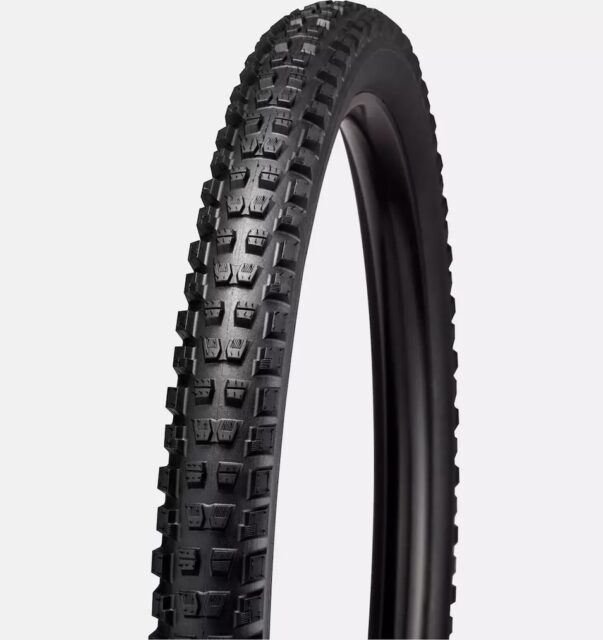
Intro
Specialized has been invested in tire development for a long time, but their refresh in 2021 marked a new and more serious chapter in their tire development. The Butcher, Eliminator, and Purgatory saw the addition of their new T9 and T7 compounds, along with the addition of the Grid Trail and Grid Gravity casings. Specialized released their first true Downhill tire, the Cannibal, just a year later in 2022. Developed with the likes of Loic Bruni and Finn Iles, it again demonstrated their commitment to making competitive tires.
We’ve spent a lot of time on those options along with the more recently updated Hillbilly in recent years, and while our experiences varied, the biggest takeaway was that the rubber proved to be miles ahead of their prior attempts — it was a real competitor to other heavyweight tire manufacturers.
Specialized’s tire development team clearly hasn’t let off the gas, and their learnings over the last few years are on display with the new Butcher and Eliminator tread patterns. The Butcher and Eliminator have gotten some meaningful revisions to increase grip and improve performance across a wider range of conditions. Let’s see how they went about doing that.
Butcher
Let’s first talk about the changes to what is arguably Specialized’s most popular tire for Trail and Gravity pursuits, the Butcher. While the tread pattern still looks quite similar to the old one, with an alternating dual block pattern down the center, those knobs have gotten reshaped a bit and now are a bit longer and less ramped — the inspiration from the Downhill-focused Cannibal is hard to miss.
The side knobs have gotten a considerable update over the old ones, gaining some breadth and now featuring more distinct L-shaped knobs that also draw some comparisons to the Cannibal. The cornering knobs appear to have gained a little bit of height over the old Butcher too, and overall, Specialized says that the new Butcher has 12% more block surface area. A closer look shows that Specialized has also staggered the center and cornering knobs a bit more dramatically, such that the cornering knobs align a bit more with the gaps between the center knobs, and vice versa.
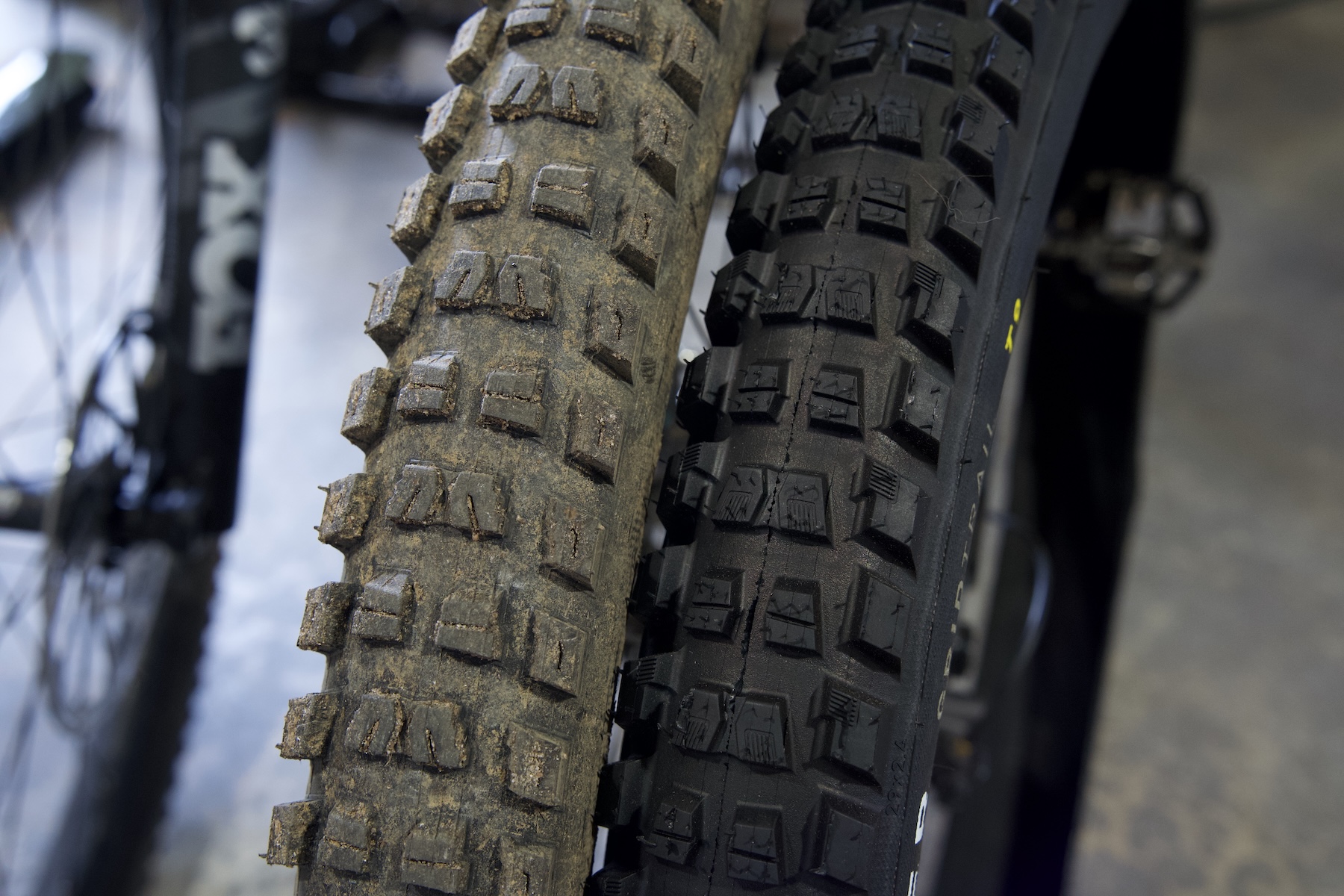
I’m excited about these changes for a couple of reasons. First, the old Butcher was a decent tire in mixed conditions, but the side knobs weren’t quite as stout as I’d like under high cornering loads, leading to a bit less overall cornering grip than some other tires. The Cannibal addressed this complaint with its much chunkier and supported side knobs, and the Butcher appears to have moved in that direction.
Secondly, and relating to cornering performance, the old Butcher’s knobs weren’t adequately staggered in my opinion (i.e., the center knobs were’t cleanly positioned at the gaps in the cornering knobs). Staggering helps create more consistent knob contact, and the old Butcher’s design led to some unpredictable cornering behavior at times, particularly on uneven surfaces. The inclusion of more defined L-shaped side knobs (rather than the older serrated-looking ones) are also cause for optimism, as I find that they tend to aid braking grip as well as consistency in the transition area between the center and side knobs.
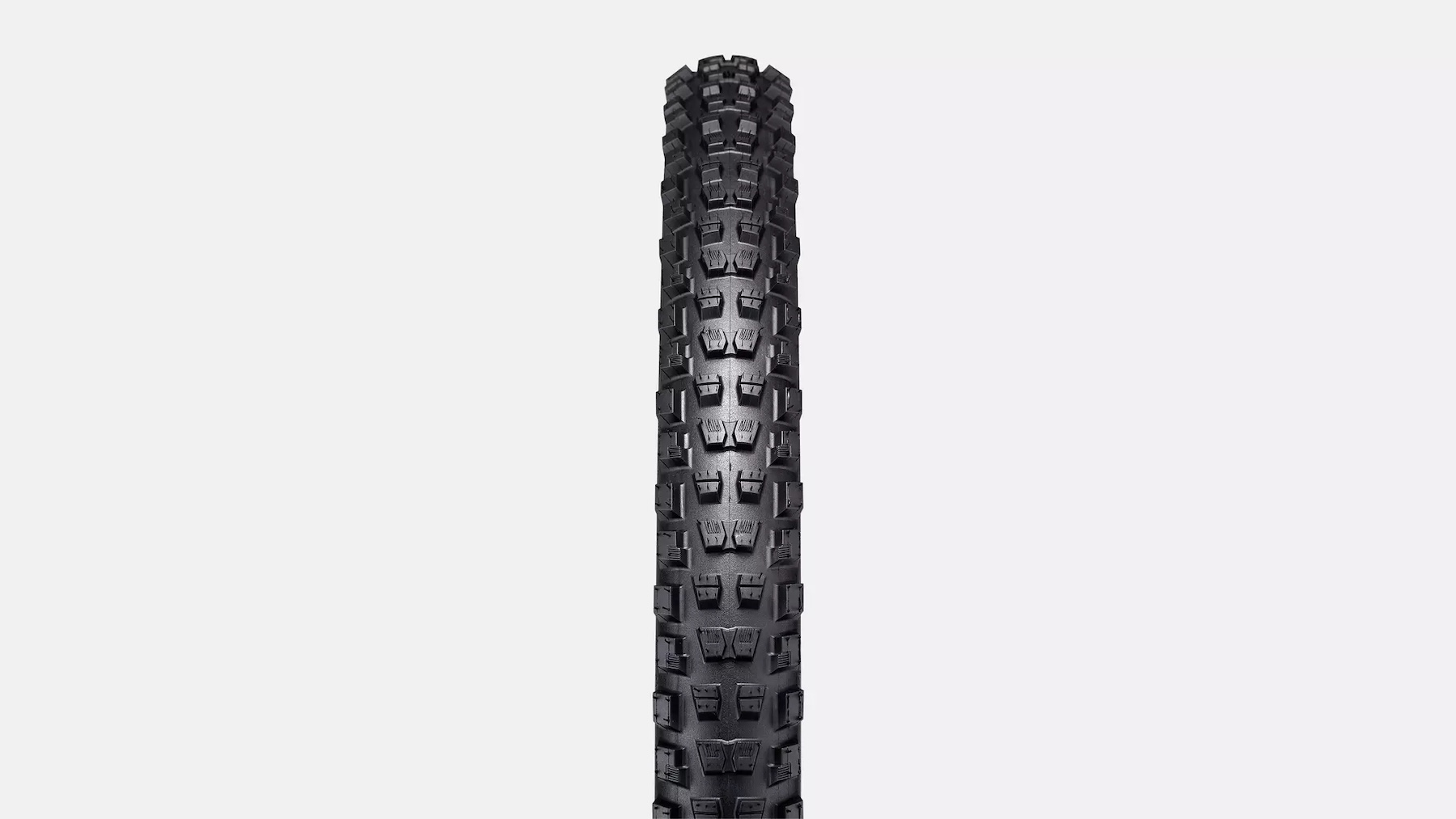
Of course, those changes don’t guarantee performance gains, but it’s exciting to see the updates. The other big change is that the Butcher now only comes in the stickiest T9 compound, but it can still be had in the lighter Grid Trail casing or stout Grid Gravity one. The Grid Trail casing also offers the option of a tan wall casing.
Eliminator
The Eliminator gets a more dramatic overhaul than the Butcher, and I, for one, am glad to see it. The old Eliminator had a fairly low profile tread pattern with small, fairly widely spaced knobs that were heavily siped and ramped. The new Eliminator undoes basically all of that, and while it keeps the same 2-3-2 knob pattern down the center, the knobs have gotten a bit taller, more square, and have less siping. The knobs are also a bit more closely spaced down the middle, with the middle row of three knobs in the 2-3-2 pattern creating a more consistent and straighter braking edge. The side knobs are still similar to its partner, the Butcher, but like its sibling they’ve been updated to include more angular L-shaped knobs which, like the center knobs, follow a 2-3-2 pattern.
I frankly didn’t get along with the old Eliminator all that well — despite rolling quite quickly, its braking performance left a lot to be desired, and while its side knobs suffered some of the same lack of hold that the old Butcher had, the cornering grip was made worse by the lack of a meaningful channel to allow the knobs to bike into softer dirt.
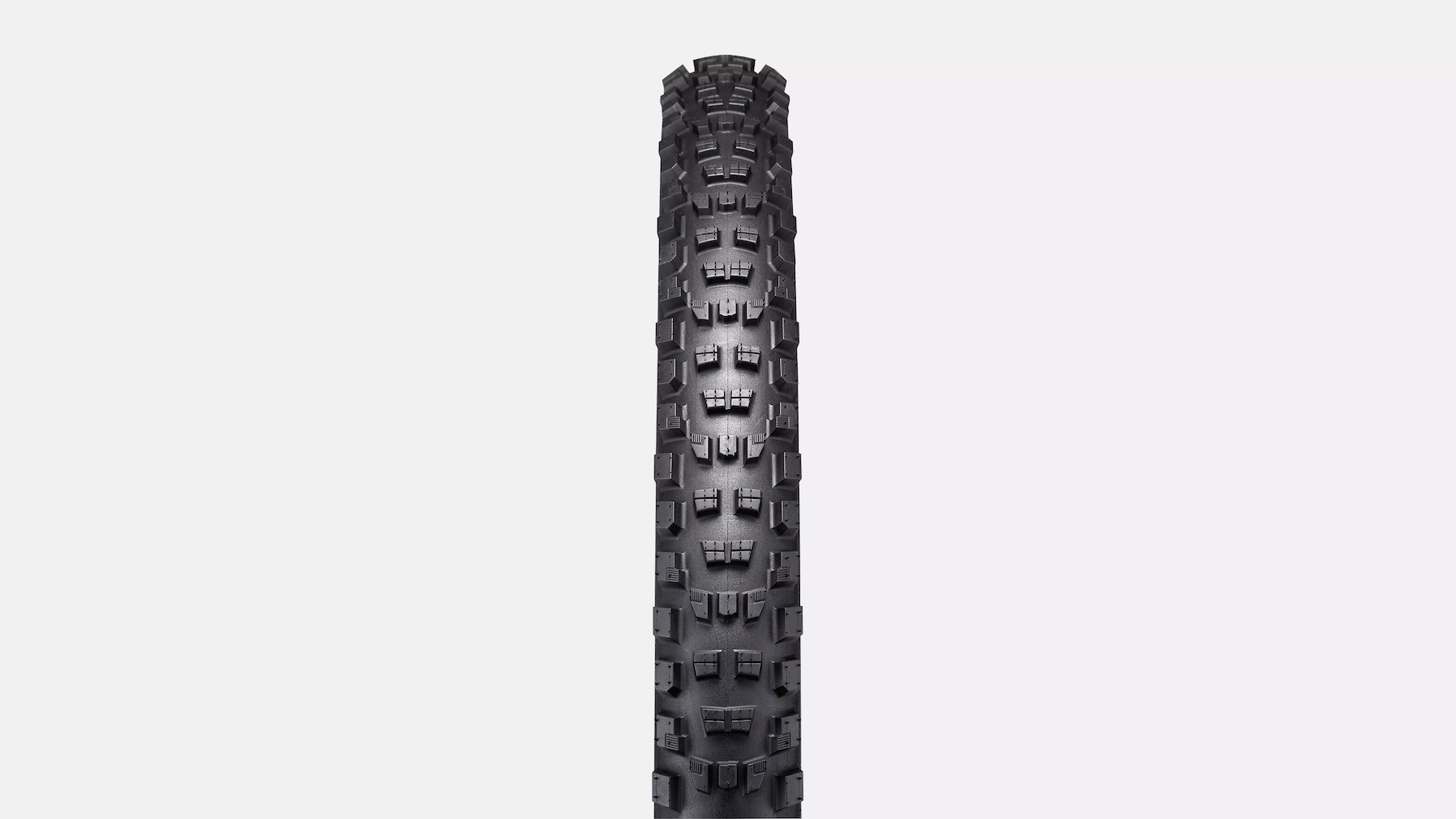
The new Eliminator is quite a bit more aggressive all around, and while I’m guessing it won’t roll quite as quickly thanks to the chunkier knobs, I’m guessing it should still do fairly well — but between the much more substantial braking edges and more supported side knobs, I’m expecting better grip in all conditions. The taller knobs should also give it more bite in soft conditions, where the old one struggled a bit, though the relatively tightly-spaced knobs will still likely mean it won’t be a great wet weather choice.
Like the Butcher, it comes in both Grid Trail and Grid Gravity casings, with the option for a tan wall casing in the Grid Trail variety. 2.4’’ is the only width available across the board, though interestingly, the Grid Trail casing only comes in the sticky T9 compound, while the Grid Gravity option comes with a dual compound T7/T9 combination that uses the firmer T7 rubber on the center knobs and T9 on the side knobs.
FULL REVIEW
The Specialized Butcher and Eliminator have been around for a while, but the new versions look quite a bit different from the prior ones, with larger, better-supported knobs and several tweaks to the tread layout that should improve both cornering consistency and braking performance. They’re still offered at a very compelling price point, but have the overhauled tread patterns made them true competitors with bigger tire brands from a performance perspective?
After several months of testing, we’re inclined to say yes — though like any tire, both have their strengths and weaknesses. We’ve ridden them from spring slop through summer dust, so let’s dig into how the Butcher and Eliminator perform.

On Trail Performance: Butcher
I’ve ridden multiple versions of the Butcher over the years, and while this new version’s predecessor was the best version yet, there was still room for improvement. Specialized had made significant improvements to the casing and compounds with their larger refresh a few years ago, and while the updated T9 rubber addressed some of my prior complaints about the underwhelming performance of the Gripton compounds from the past, I still found inherent challenges with the tread design. In my mind, it came down to two things: (1) insufficiently supported side knobs, and (2) suboptimal staggering of the center and side knobs, hindering overall grip and cornering consistency.
We talked about this a bit in the Design section above, but in addition to addressing both the side knob shape and knob staggering to get at those two issues, Specialized also broadened the center knobs while reducing the ramping at the leading edges. Collectively, I’ve found the changes to yield significant performance gains in grip and braking performance.
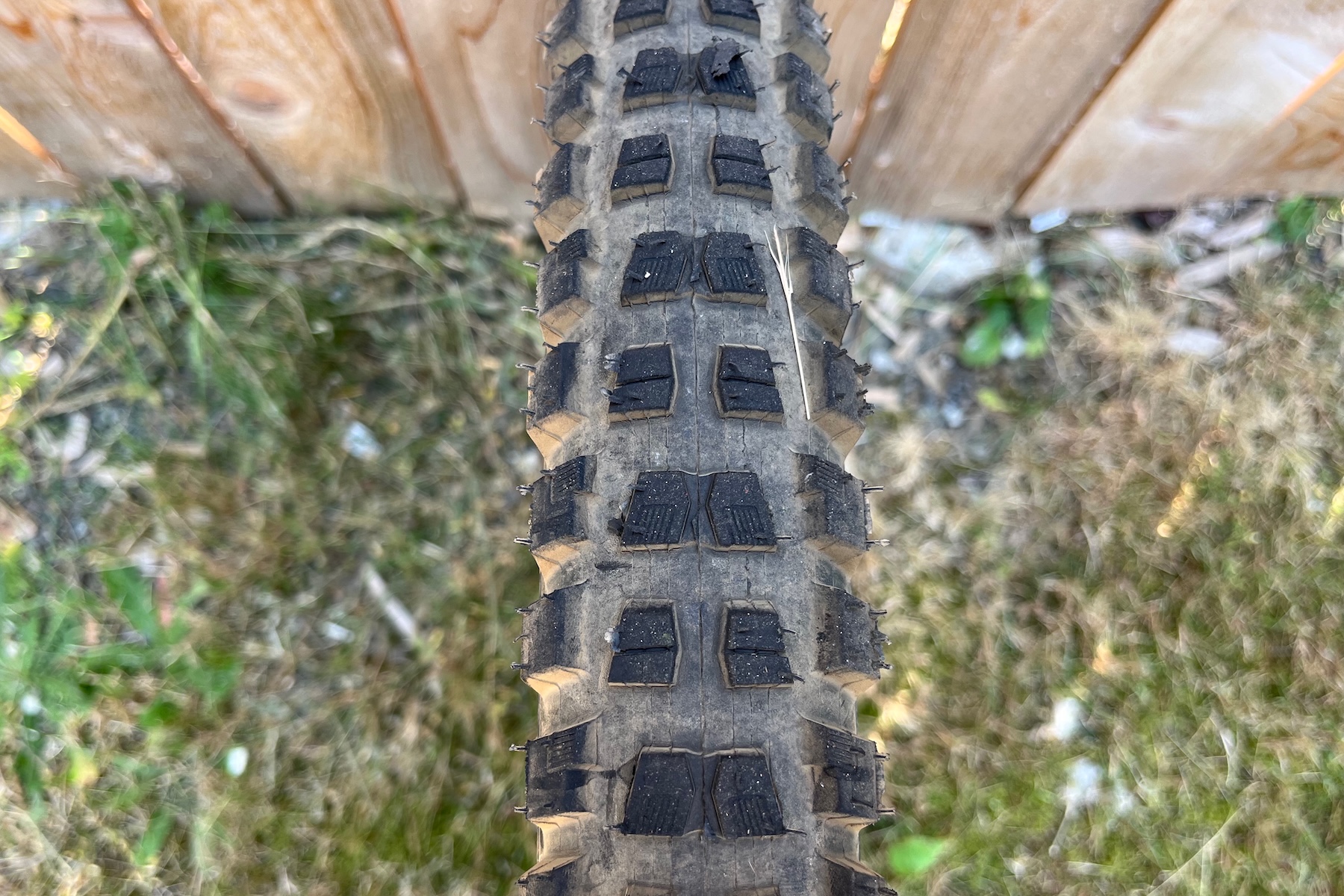
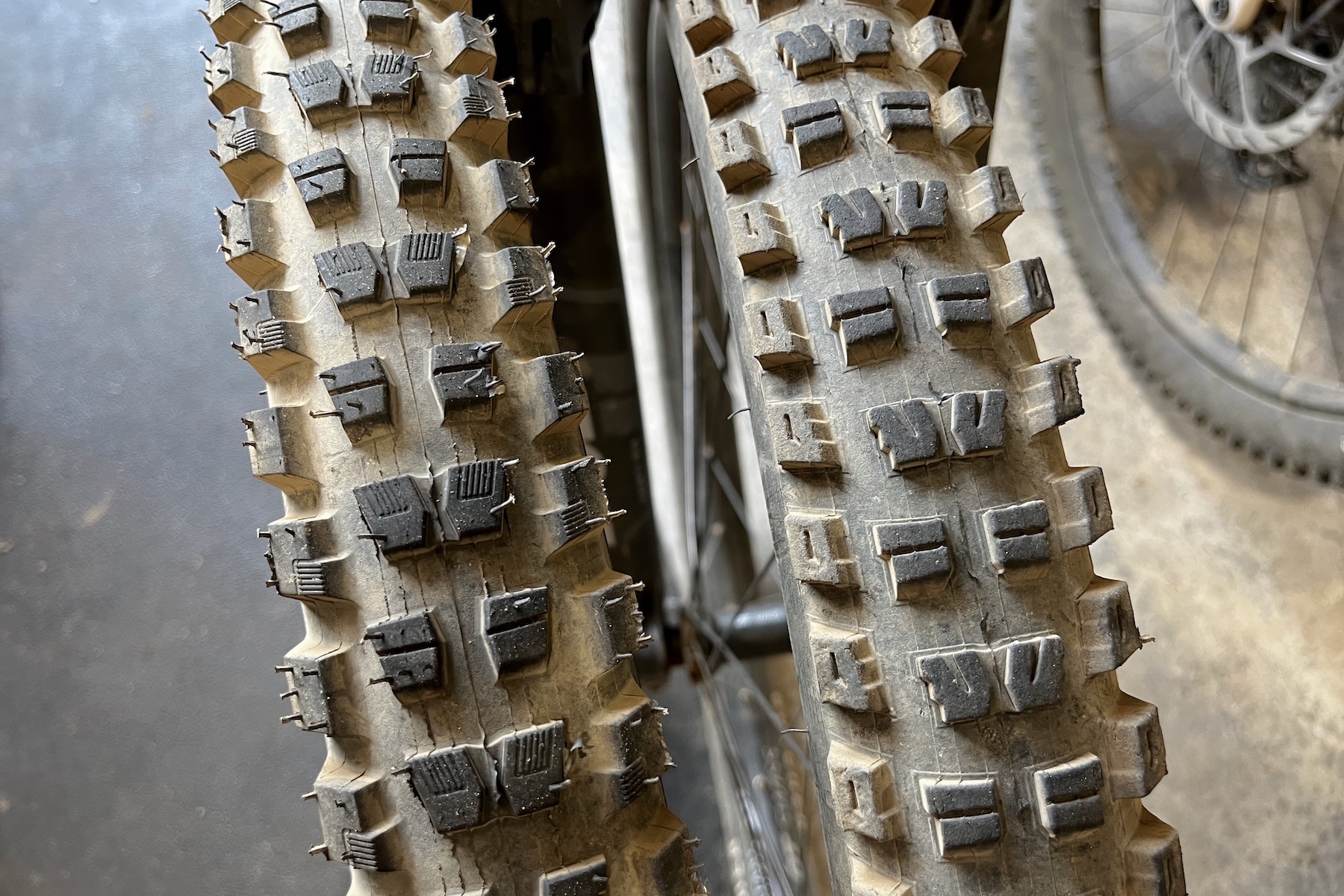
Perhaps the single largest improvement to the Butcher is in its cornering stability — this latest one is a lot better in that regard, particularly at higher speeds and on firmer or variable surfaces. The old Butcher wasn’t terrible on softer, more forgiving dirt, but the knobs could really start to feel squirmy and unpredictable on harder surfaces, and especially in loose-over-hard conditions. Consequently, while I could get along with a Butcher just fine in a lot of situations, it wasn’t quite the confidence booster when grip was at a premium. Specialized clearly spent a lot of time working on the side knobs of the new Butcher, and they’re quite a bit broader while also losing the small sipe in the center of each knob. The new L-shaped side knobs provide more transition support when rolling the tire from the center knobs to the side ones, and the better staggering between the side and center knobs helps the Butcher to dig in in loose conditions a lot more effectively, too.
The Butcher also gets a sizable upgrade in its braking performance, and I again give a lot of credit to the L-shaped side knobs. The updated center knobs are a touch less ramped than the old ones, which likely helps, but the side knobs seem to hold up better to high braking loads, deforming a bit less while also allowing the short horizontal face of the L-shaped knobs to dig into the ground like a tiny scoop.
The Butcher still sits as a sort of middle-of-the-road tire in its intentions, and while something like the excellent Hillbilly would be my choice from Specialized for super deep dust or mucky conditions, the Butcher covers a breadth of riding conditions fairly well. The Butcher’s grip on wet roots and rocks is solid, and it’s a predictable and solid performer in damp conditions overall.
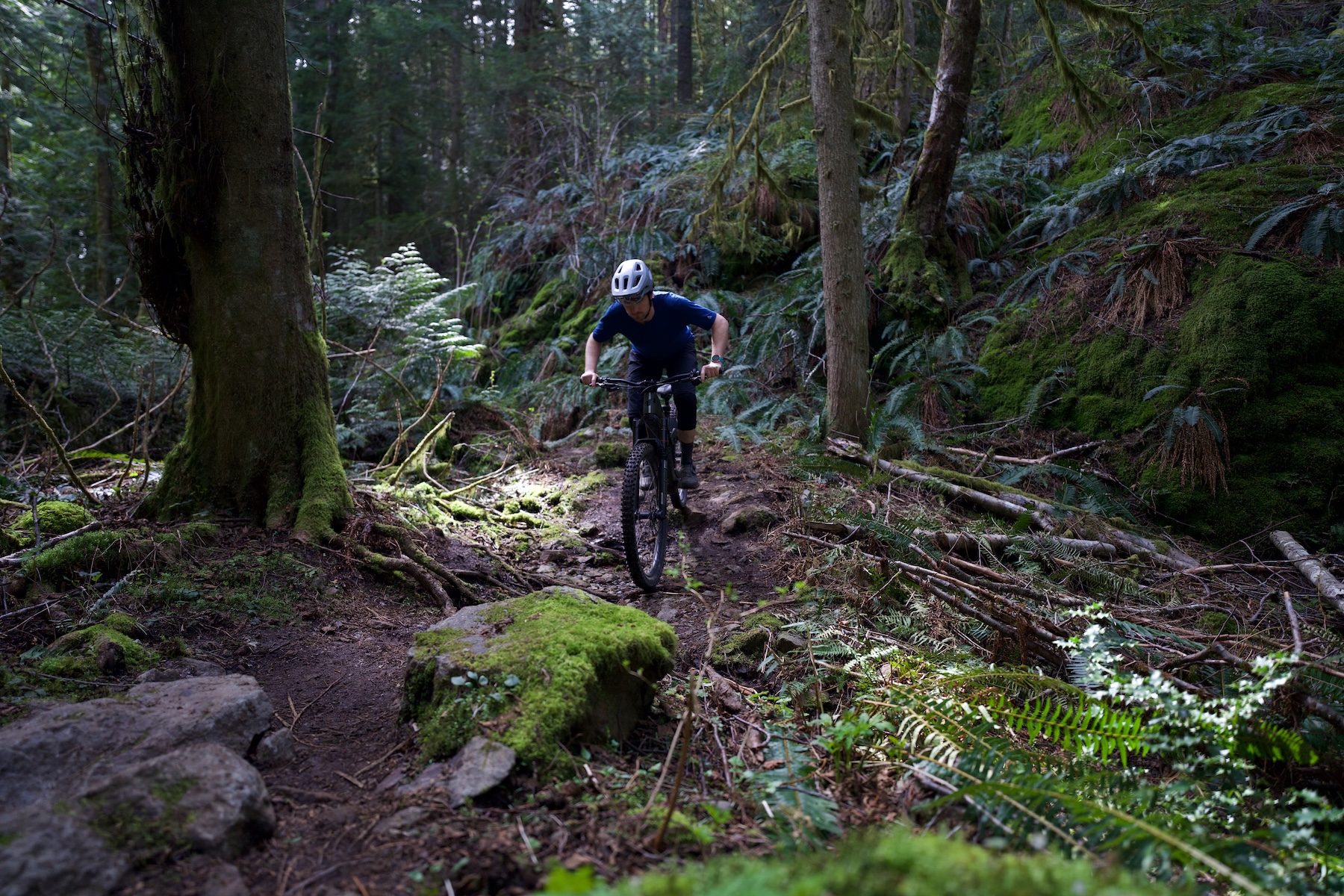
Of course, a great tread pattern can be ruined by rubber compound and casing choices, but fortunately, Specialized has done well here, too. The Butcher is now only available in the T9 compound (the old one had a firmer T7 option), and while the T7 compound might be a nice rear tire option for drier locales, the T9 compound is still fairly sticky yet well-rounded. It still doesn’t quite match the wet grip of a Maxxis MaxxGrip tire on hard surfaces, feeling closer to something like Continental’s Super Soft compound, but it lasts far, far longer than MaxxGrip does. It also rolls better than MaxxGrip, though don’t expect to set any land speed records — it’s perhaps slightly better than average in its rolling speed for a sticky Enduro tread, but still prioritizes grip over efficiency.
On the casing front, I’ve tested both the Grid Trail and Grid Gravity options, but the Grid Gravity casing won me over for its damped and sturdy feel. Its supportiveness also feels like a better match to the stout side knobs of the new Butcher. It’s not the most compliant, with a stiffer feel than my current favorite, Continental’s Downhill casing, but it’s still a decent balance between support and compliance. The Grid Trail casing is still a great front tire option for Trail bikes where the lower weight is appreciated, but especially given the Butcher’s sole T9 rubber compound offering, it seems like Specialized is generally positioning the Butcher more on the gravity side of things.
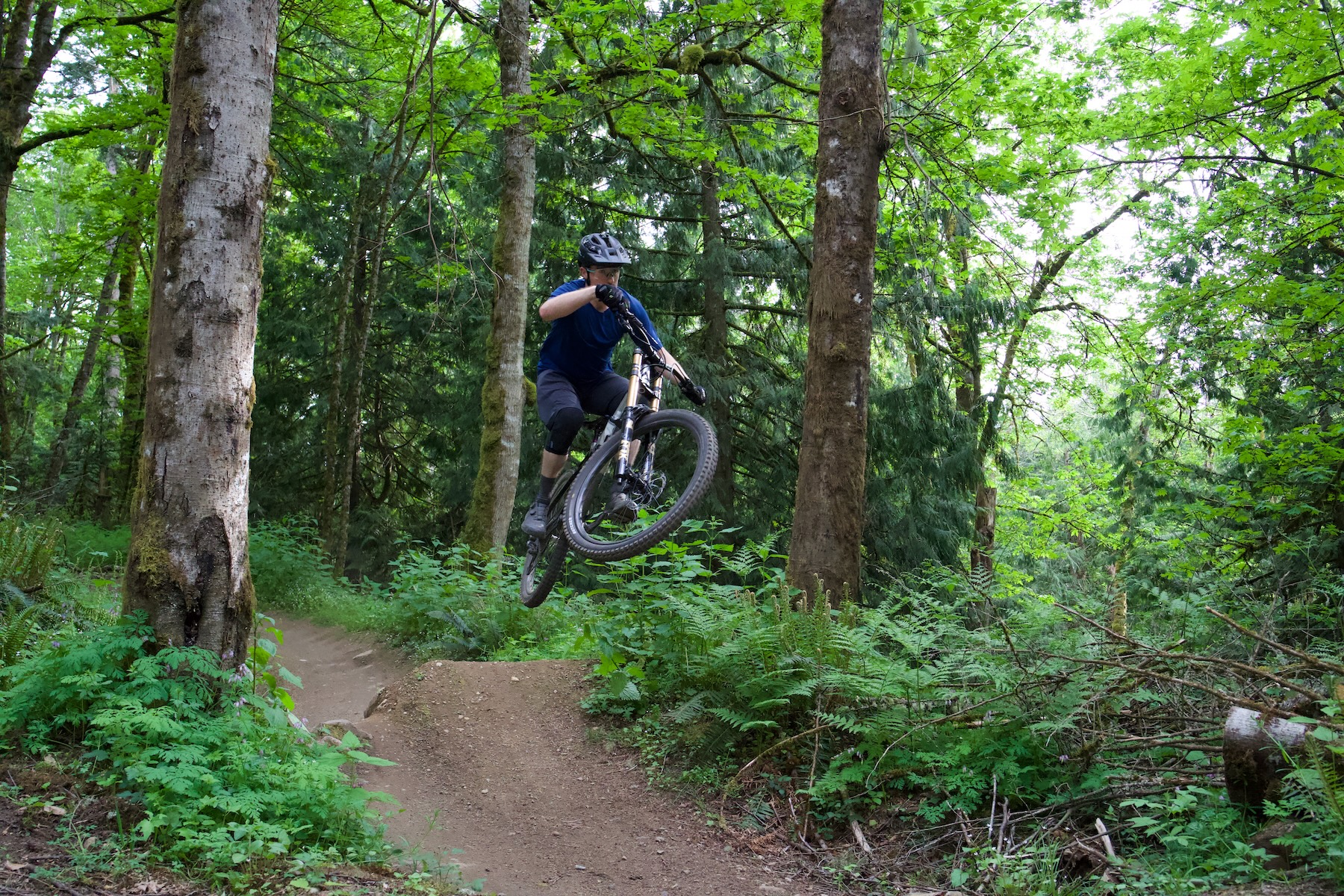
On-Trail Performance: Eliminator
The new Butcher is, in my opinion at least, better than the old one in just about every way, but I still have to give the “Most Improved” award to the Eliminator. I hinted at this above, too, but the prior Eliminator was not a tire I enjoyed in many situations. It rolled quickly, but seemed to struggle with grip in a lot of scenarios while also providing pretty poor braking traction. Specialized clearly saw a lot of room for improvement, too, as the new Eliminator has gotten a major update for the better.
I won’t go through all of the design changes here (again, see the Design section above for that deeper dive), but in short, the new Eliminator is a more substantial tire in just about every respect compared to its predecessor. The side knobs have moved in the direction of the new Butcher, adopting a similarly blocky stature and incorporating a nearly identical L-shaped knob design into every third block. The center knobs are a lot smaller than those on the Butcher while being more closely spaced, and though they’re in a somewhat similar 2-3-2 layout as with the old tire, they feature far less siping than before.
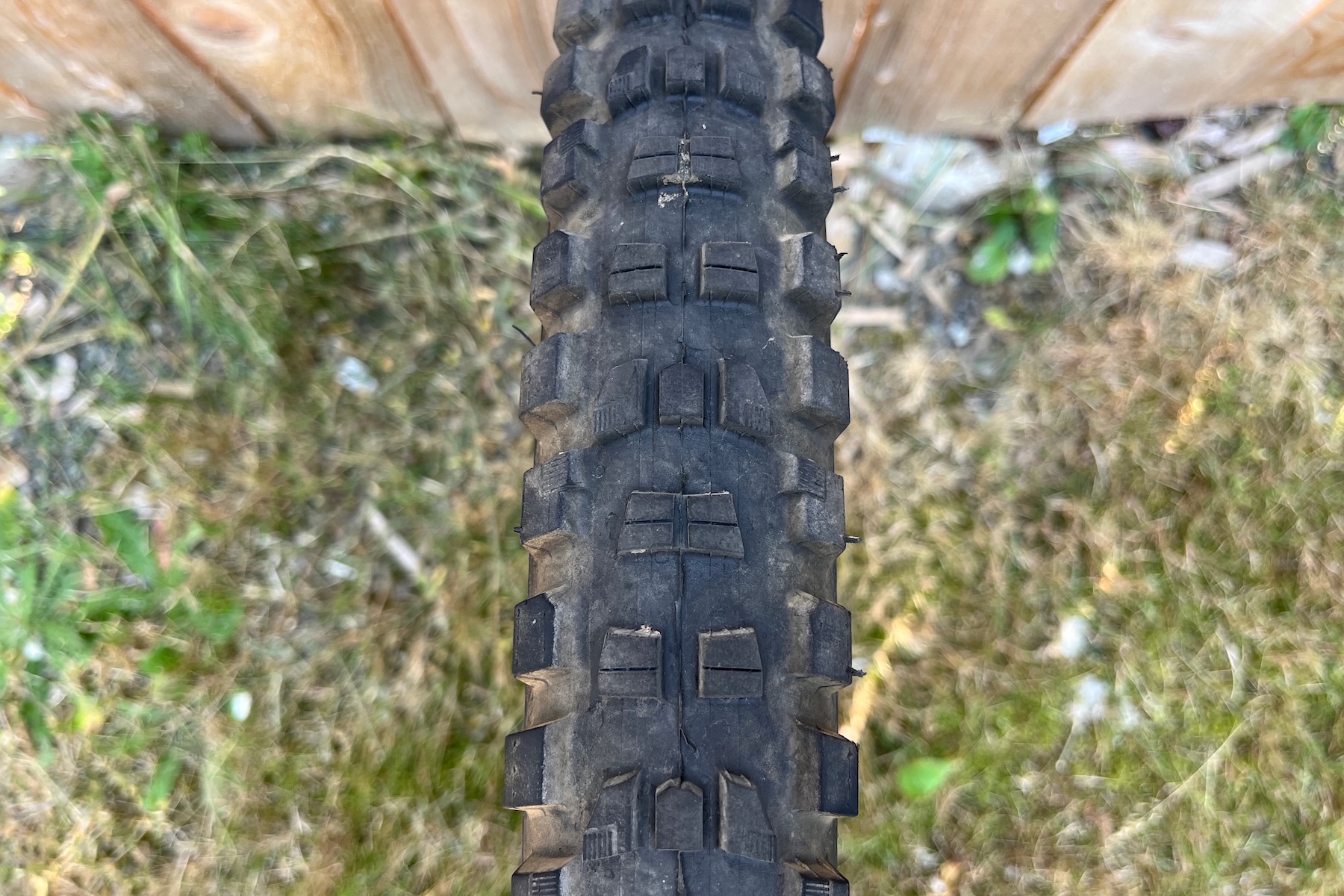
I’ve been running the Eliminator as a rear tire in the Grid Gravity casing since the wet final days of spring, subjecting it to dusty bike park laps in Whistler as well as long pedal-powered rides on my local trails. It’s still positioned as a fast rolling tire for drier conditions, and while it was far better than the old one in wet weather, the tread pattern still clogged up fairly easily and struggled to penetrate thick, wet soil. As the trails dried out, the Eliminator started to come into its own, offering very good rolling speed for a tire with a beefy casing. Specialized’s choice to run their firmer T7 rubber on the center knobs and the softer T9 compound on the side knobs undoubtedly helps, but the tread pattern itself also rolls quickly with relatively little vibration on roads and hardpack.
The Eliminator holds a corner much more effectively than the old one, which is perhaps unsurprising given the knob similarities with the Butcher. Where the Eliminator really shows a marked improvement, though, is in its braking grip. Specialized seems to have achieved this by creating straighter and better-supported edges along the center knob pattern with fewer ramps, and also by introducing the L-shaped knobs that I give so much credit to on the Butcher. The combination seems to create sharper and more supported leading edges on each knob that can bite more tenaciously into the dirt. It’s still not a great fit for wet conditions due to its tendency to pack up, but in everything from intermediate conditions to moon dust, the Eliminator’s ability to balance efficient rolling and solid braking and cornering performance is admirable. I haven’t ridden the old Eliminator in years at this point, but I think the new version feels slightly slower rolling — that makes sense given the burlier, blockier knobs. I’ll take that tradeoff any day for the more consistent grip in varied conditions.
I initially wondered if the softer side knobs might wear unevenly in comparison to the center ones, and while they’ve lost their sharp edges a bit more quickly, wear has been pretty even overall. Folks who read my Flash Review may have seen that my first Eliminator rear tire had a tragically short life. I somehow found a razor-sharp rock that managed to slice through the full depth of a knob and the casing, fully ruining the tire on my very first ride. The replacement tire I got after that has been subjected to plenty of abuse on our dry, rocky summer trails without any issue.
Despite a rocky start (pun intended), the durability of the Eliminator has been quite good, with the firmer compound of the center knobs resisting wear admirably well.
Bottom Line
Specialized continues to push its in-house tire program forward, and the results are promising. The new Butcher and Eliminator are both improved over their predecessors, and each carves out its own niche in the Specialized tire lineup.
The Butcher offers impressive versatility as a generalist, rarely feeling out of place while bringing vastly improved cornering support over the prior version. There are plenty of specialist tires that are better in specific conditions, but as a tire to run year-round, it’s a very solid choice. And while Eliminator still isn’t a great choice in wet conditions, it rolls, brakes, and corners quite well in drier ones. The icing on the cake here is that both the Butcher and Eliminator retail for $25 – $30 less than tires from other leading manufacturers. If you’re willing to stray from prior favorites, I’d wager that a lot of folks will be pretty happy with Specialized’s latest offerings.

Thanks for the review. Assuming you were looking at the heavier casing, when would you choose the Butcher over the Cannibal? How is their purpose different?
I haven’t spent all that much time on the Cannibal to be honest, but in my limited experience its a lot more purposeful in its gravity-biased design than the Butcher is. Which is to say, the Cannibal rolls slower, and the bigger and stiffer knobs require a bit more speed to feel like they’re really gripping. On the flipside, the Cannibal feels more locked in at truly high speeds. The Butcher’s center knobs do a better job of penetrating softer dirt as they’re much less heavily ramped, and I’d probably pick the Butcher as being more adaptable for changing conditions, whereas the Cannibal’s stiffer and broader knobs are more confident on firmer trails and when you’re really pushing hard.
Thank you! I was looking to buy them as a refreshment replacement for … Butcher and Eliminator =) They are pretty good tires for dry and flowy trails. I hope the new version will be more capable in wetter and more rugged conditions. I don’t want to have to swap to Argo/Krypto wheelset every time the flow ends.
There’s no way that the Butcher replaces the Argotal for those truly wet days (though I happen to really like the Hillbilly as an alternative there), but if most of your riding is in dry to intermediate conditions with the occasional wet day, I bet you’ll be pleased.
I finally had the opportunity to test the tires in a representative terrain, with lots of pedaling, fast trails, chunky trails, and some sketchy trails. My verdict: it’s a nice combination. Overall, they roll well. The grip and support have improved significantly, which is especially noticeable when pumping out of corners. TBH, I appreciate the reduced rolling, the tires now feel balanced. With the old combination, I had to brake more often to adjust to the grip they provided.
I would say this new combo fits well between the older Butcher/Eliminator and the Argotal/Kryptotal. I’ll definitely be stocking up on the old Butcher/Eliminator when they go on sale, as they are still excellent tires for good conditions, while these new ones may take over as my daily drivers.
Great review!
As someone who prefers a traditional 2-2 tread pattern, do you see any benefits of this latest Butcher T9 Gravity over a Kryptotal Re SS DH for the front wheel?
That’s been my favourite so far with all aspects considered (casing, compound, weight, Rolling speed, tread pattern etc)
You mentioned you only tried the eliminator on the rear, but what would you think of a T7 Trail Eliminator for the front wheel for a trail setup? Looks a bit more burly than a new Purgatory, maybe more like a Dissector without such a huge transition zone and maybe more supported side knobs.
Thanks!
I haven’t ridden the Kryptotal Re as a front just yet, so I can’t speak for that one too accurately. That said, the Butcher should clear mud just slightly better and perhaps roll a tiny bit faster and be more consistent at moderate lean angles due to the longer, flatter knobs. The Kryptotal Re is all about braking traction, which is where that tire shines. I like Continental’s DH casing more than Specialized’s Gravity one as it feels a little less wooden.
The Eliminator only comes in T9 in the Trail casing, but could be a solid option to try for mostly dry conditions. I haven’t tried that one as a front, and I think that my preferences for a more open tread up front would push me towards something else, but for drier conditions the Eliminator should offer more braking grip and more cornering hold than the Purgatory while rolling faster than the Butcher.